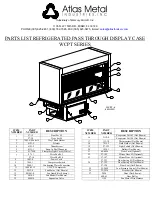
Rev 1 Mar/2000
KMD 150 Pilot's Guide
149
for taking relative measurements over the short periods between the sig-
nals received from each satellite.
An approximate knowledge of universal time is required, to know which
satellite to expect in which part of the sky. This is usually given by the
first satellite the receiver acquires after switch on.
The exact universal time is transmitted as part of the almanac and health
status data by each satellite. This is then corrected by the receiver for
signal transition delay as part of the position fix calculations.
ACCURACY AND RELIABILITY
All GPS satellites transmit two separate pseudo-random codes on two
different frequencies.
The most accurate is the P code, which is transmitted at both 1.2276
GHz (1.2276 thousand million cycles per second) and 1.57542 GHz.
The P code is extremely complex and has a repetition rate of one week.
This code is restricted to military use only, is capable of supreme accu-
racy and is supposedly unbreakable.
The signal available to civilian users is transmitted on 1.57542 GHz only
and is called the C/A code. C/A stands for Coarse Acquisition.
This code is relatively simple compared to the P code and has a repeti-
tion rate of one millisecond.
The present maximum accuracy for receivers using the C/A code is 15
meters.
There is the possibility however of this being intentionally degraded (by
feeding random errors into the satellite clocks) to 100 meters for strategic
reasons. This is called Selective Availability or S/A and can be imple-
mented at will by the DOD.
Day to day accuracy is monitored by Falcon Air Force Base, Colorado,
who receive information from a group of ground stations positioned at
Ascension Island, Diego Garcia, Kwagale and Hawaii.
These stations receive the satellite signals and check them for timing
accuracy. If any errors are detected, error information is transmitted
back to the satellite, which then corrects itself.
Reliability should be good when the full constellation of 24 satellites are
in orbit.
Each satellite has three separate clocks on board (one in use and two
standby) and in the event of the total failure of a satellite, one of the
spares already in orbit can be maneuvered into position within a few
hours.
How Does GPS Work?
KMD 150 PG 5/12/00 12:58 PM Page 149




























